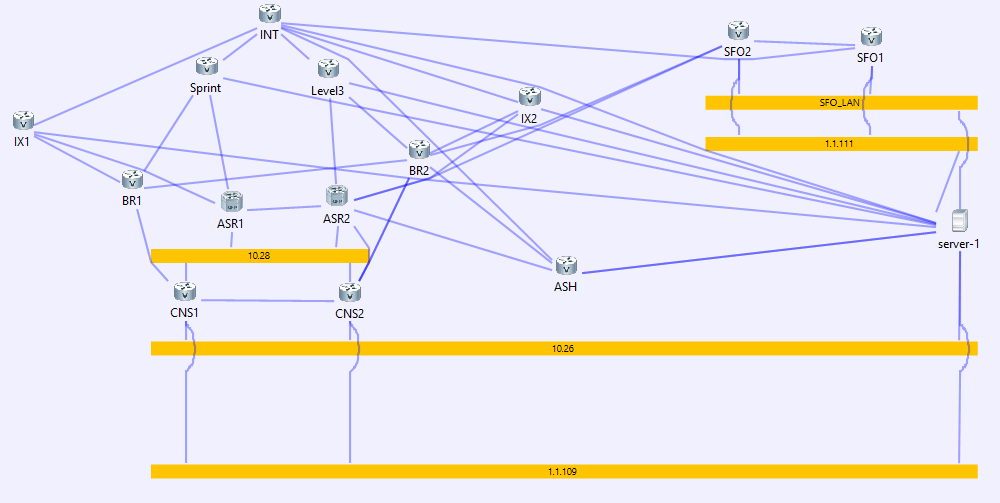Lab goal
Create new VIP on 10.136.6.17.
Using an AppShape++ script to choose the preconfigured group/pool "10".
Once the laodbalancer chooses a server, all requests from the client's source IP should go to the same server. This is called persistence or stickiness.
Setup
The loadbalancer is Radware's Alteon VA version 29.5.1.0
The initial Alteon VA configuration can be found
here.
Notice the group and hosts are preconfigured:
1
2
3
4
5
6
7
8
9
10
11
12
13
14
15
16
17
| /c/slb/real 1
ena
ipver v4
rip 10.136.85.1
/c/slb/real 2
ena
ipver v4
rip 10.136.85.2
/c/slb/real 3
ena
ipver v4
rip 10.136.85.3
/c/slb/group 10
ipver v4
add 1
add 2
add 3
|
Alteon configuration
First the AppShape++ script:
1
2
3
4
5
6
7
8
9
10
| /cfg/slb/appshape/script take_10/en/import
attach group 10
when HTTP_REQUEST {
group select 10
}
-----END
|
Line 1 - This allows to just copy paste the whole text to Alteon's CLI. It defines a script if its not exists, enable it and imports it.
Line 7 - Selects group 10.
Next, lets configure VIP/virt with its services:
1
2
3
4
5
6
7
8
9
10
11
| /c/slb/virt 6_17
ena
ipver v4
vip 10.136.6.17
/c/slb/virt 6_17/service 80 http
group 1
rport 80
pbind clientip norport
dbind forceproxy
/c/slb/virt /service 80 http/appshape
add 10 take_10
|
Line 8 - Add the stickiness/persistence part, based on the clients IP address.
Line 11- Add AppShape++ script.
Test
This didn't go well. We still see that all servers were used and not just one.
The reason for that is that once we select a group/pool using AppShape++, Alteon will ignore
pbind settings.
Another try
AppShape++ has the following command :
persist
This command can be used to create a persistence/stickiness .
One way we can use this command is by fixing our script. Another way would be to create another script and add it to the service. Using a separate script will allow us to reuse that script on more than on service / VIP.
1
2
3
4
5
6
7
| /cfg/slb/appshape/script persist/en/import
when HTTP_REQUEST {
persist source_addr 255.255.255.255
}
-----END
|
Line 4 - Create persistence/stickiness by using the source IP address with /32 mask.
Now lets add it to the service:
1
2
| /c/slb/virt 6_17/service 80 http/appshape
add 16 persist
|
Line 2 - We have added the new AppShape++ script to the service. We use priority 16 which means this will run after priority 10 which was
take_10 script.
Another Test
It works! SRV3 was selected for all HTTP requests.
We can also have a look at the persistance table:
1
2
3
4
5
| >> LB1 - Persistency Information# /i/slb/persist/dump
Printing Data Table Entries for SP 1
key-10.136.3.1,vs:10.136.6.17,80,g:10,value-g:10 rs:3 80, age 178
Total number of session IDs: 1
|
Line 1 - Is the command to show all persistence object, in yellow.
Line 4 - Me in red, is using SRV3 in green, and the idle timeout is 178 seconds in blue.
Summary
So we learned that not everything we configure on the VIP/virl service applies when we use AppShape++.
We also learned how and why to use more than one script per service.
Enjoy...



